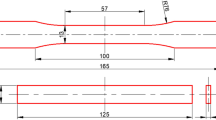Abstract
Vibration-assisted 3D printing (VAP) is a new direct-write additive manufacturing (AM) method that combines the conventional use of back pressure with the novel addition of vibrations induced at the syringe tip to activate the flow and allow higher-viscosity materials to be printed. This work compares the print capabilities of a custom-made VAP printer to those of an established commercial printer using polymer clay. Characterization tests were conducted comparing the two methods in their turning quality. In addition, a variety of other shapes were printed by both printers to evaluate feature resolution, unsupported overhang angle, negative space feature construction, and less-than-fully-dense self-supported 3D lattices. The porosity and regularity of the printed lattices were characterized using X-ray microtomography (MicroCT) scans. The quality of the shapes was compared using statistical methods and a MATLAB edge-finding code. The results show that the VAP printer can manufacture parts of superior resolution than the commercial printer due to its ability to extrude highly viscous material through a smaller nozzle diameter. The VAP print speeds were also found to be as high as twenty times those of the direct write printer. This work lays the foundation for leveraging AM in the printing of highly loaded or viscous shear-thinning inks as a means of improving their final quality.













Similar content being viewed by others
Data availability
Not applicable.
Code availability
Not applicable.
References
Shen A, Bailey CP, Ma AWK, Dardona S (2018) UV-assisted direct write of polymer-bonded magnets. J Magn Magn Mater 462:220–225. https://doi.org/10.1016/j.jmmm.2018.03.073
Shen A, Peng X, Bailey CP, Dardona S, Ma AWK (2019) 3D printing of polymer-bonded magnets from highly concentrated, plate-like particle suspensions. Mater Des 183:108133. https://doi.org/10.1016/j.matdes.2019.108133
Chen Z, Li Z, Li J, Liu C, Lao C, Fu Y, Liu C, Li Y, Wang P, He Y (2019) 3D printing of ceramics: a review. J Eur Ceram Soc 39:661–687. https://doi.org/10.1016/j.jeurceramsoc.2018.11.013
Muravyev NV, Monogarov KA, Schaller U, Fomenkov IV, Pivkina AN (2019) Progress in additive manufacturing of energetic materials: creating the reactive microstructures with high potential of applications. Prop Explos Pyrotech 44:941–969. https://doi.org/10.1002/prep.201900060
Chandru RA, Balasubramanian N, Oommen C, Raghunandan BN (2018) Additive manufacturing of solid rocket propellant grains. J Propul Power 34:1090–1093. https://doi.org/10.2514/1.B36734
Yildirim F, Tiryaki E, Kabak M (2012) Optimal propellant grain geometry design for large caliber projectiles. In OTEH, Belgrade, Serbia 7
Li W, Ghazanfari A, Leu MC, Landers RG (2015) Methods of extrusion on demand for high solids loading ceramic paste in freeform extrusion fabrication. In Austin, Texas, USA, 14
Gunduz IE, McClain MS, Cattani P, Chiu GT-C, Rhoads JF, Son SF (2018) 3D printing of extremely viscous materials using ultrasonic vibrations. Addit Manuf 22:98–103. https://doi.org/10.1016/j.addma.2018.04.029
McClain MS, Gunduz IE, Son SF (2019) Additive manufacturing of ammonium perchlorate composite propellant with high solids loadings. Proc Combust Inst 37:3135–3142. https://doi.org/10.1016/j.proci.2018.05.052
Rebaioli L, Fassi I (2017) A review on benchmark artifacts for evaluating the geometrical performance of additive manufacturing processes. Int J Adv Manuf Technol 93:2571–2598. https://doi.org/10.1007/s00170-017-0570-0
Ke-Xi Y, Ze-Ming T, Guo-Juan W (1986) Viscosity prediction of composite solid propellant slurry. Prop Explos Pyrotech 11:167–169
Brooks H, Rennie A, Abram T, McGovern J, Caron F (2011) Variable fused deposition modelling - concept design and tool path generation. In Lancaster, UK, pp. 113–122. https://doi.org/10.13140/2.1.2280.2887
3D print – #3DBenchy (n.d.) http://www.3dbenchy.com/3d-print/ (Accessed 1 Apr 2020)
Sehgal P, Ramaswamy M, Cohen I, Kirby B (2019) Using acoustic perturbations to dynamically tune shear thickening in colloidal suspensions. ArXiv.Org 123. http://search.proquest.com/docview/2226643582/
Azzolini A, Sglavo VM, Downs JA (2014) Novel method for the identification of the maximum solid loading suitable for optimal extrusion of ceramic pastes. J Adv Ceram 3:7–16. https://doi.org/10.1007/s40145-014-0088-y
Acknowledgements
A. Afriat and J. Bach worked equally on this paper. This work was funded by the Strategic Environmental Research and Development Program (SERDP) grant no. W912HQ19C0063. The authors also acknowledge Trevor Fleck, John McCaw, and Stephanie Andress for their contribution to this study and vibration-assisted printing more generally.
Funding
This work was funded by the Strategic Environmental Research and Development Program (SERDP) grant no. W912HQ19C0063.
Author information
Authors and Affiliations
Contributions
A. Afriat and J. Bach worked equally on this paper. The authors also acknowledge Trevor Fleck, John McCaw, and Stephanie Andress for their contribution to this study and vibration-assisted printing more generally.
Corresponding author
Ethics declarations
Ethics approval
Not applicable.
Consent to participate
The authors consent to participate.
Consent for publication
The authors consent to the publication of this manuscript.
Competing interests
The authors declare no competing interests.
Additional information
Publisher's note
Springer Nature remains neutral with regard to jurisdictional claims in published maps and institutional affiliations.
Rights and permissions
Springer Nature or its licensor holds exclusive rights to this article under a publishing agreement with the author(s) or other rightsholder(s); author self-archiving of the accepted manuscript version of this article is solely governed by the terms of such publishing agreement and applicable law.
About this article
Cite this article
Afriat, A., Bach, J.S., Gunduz, I. et al. Comparing the capabilities of vibration-assisted printing (VAP) and direct-write additive manufacturing techniques. Int J Adv Manuf Technol 121, 8231–8241 (2022). https://doi.org/10.1007/s00170-022-09815-8
Received:
Accepted:
Published:
Issue Date:
DOI: https://doi.org/10.1007/s00170-022-09815-8




